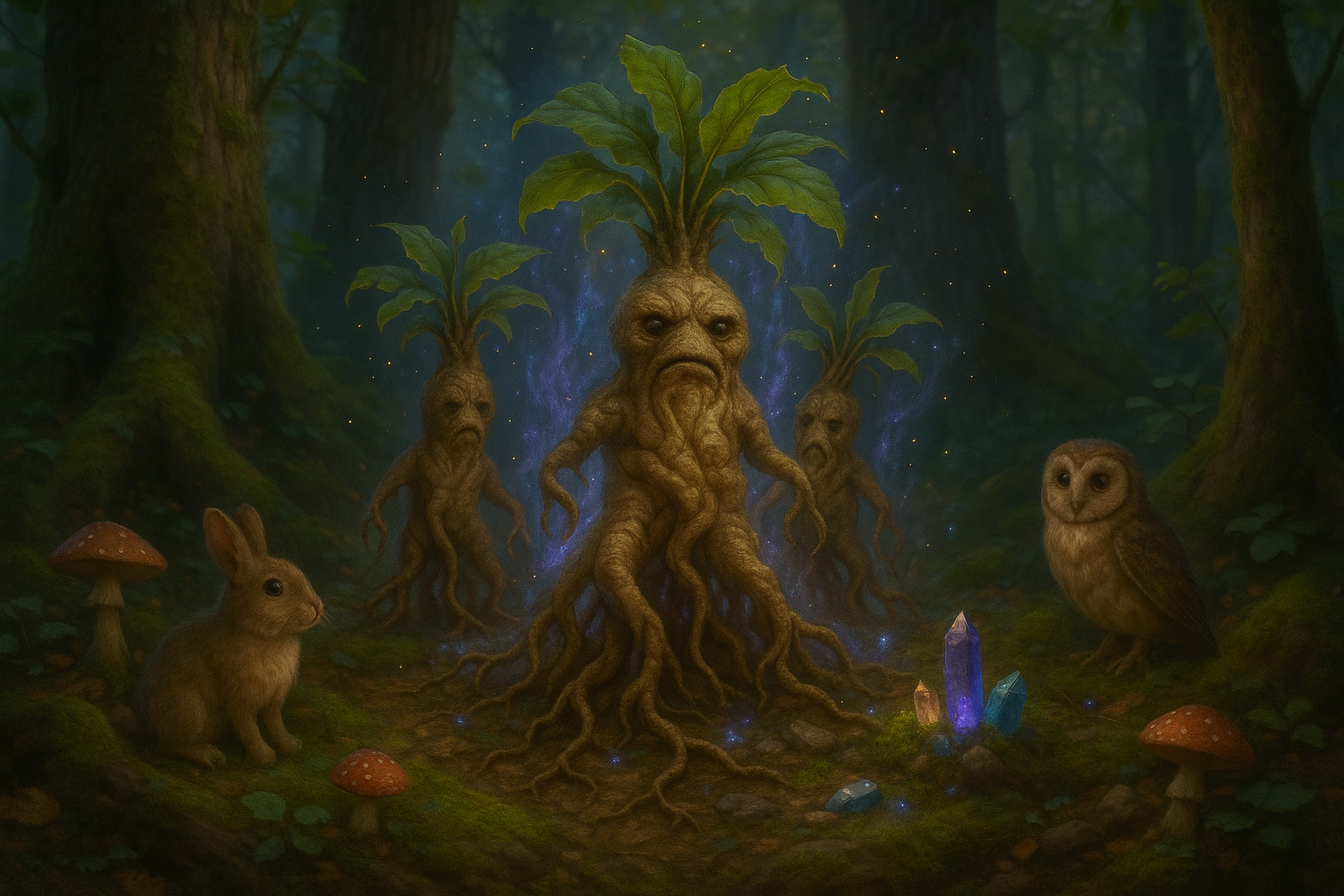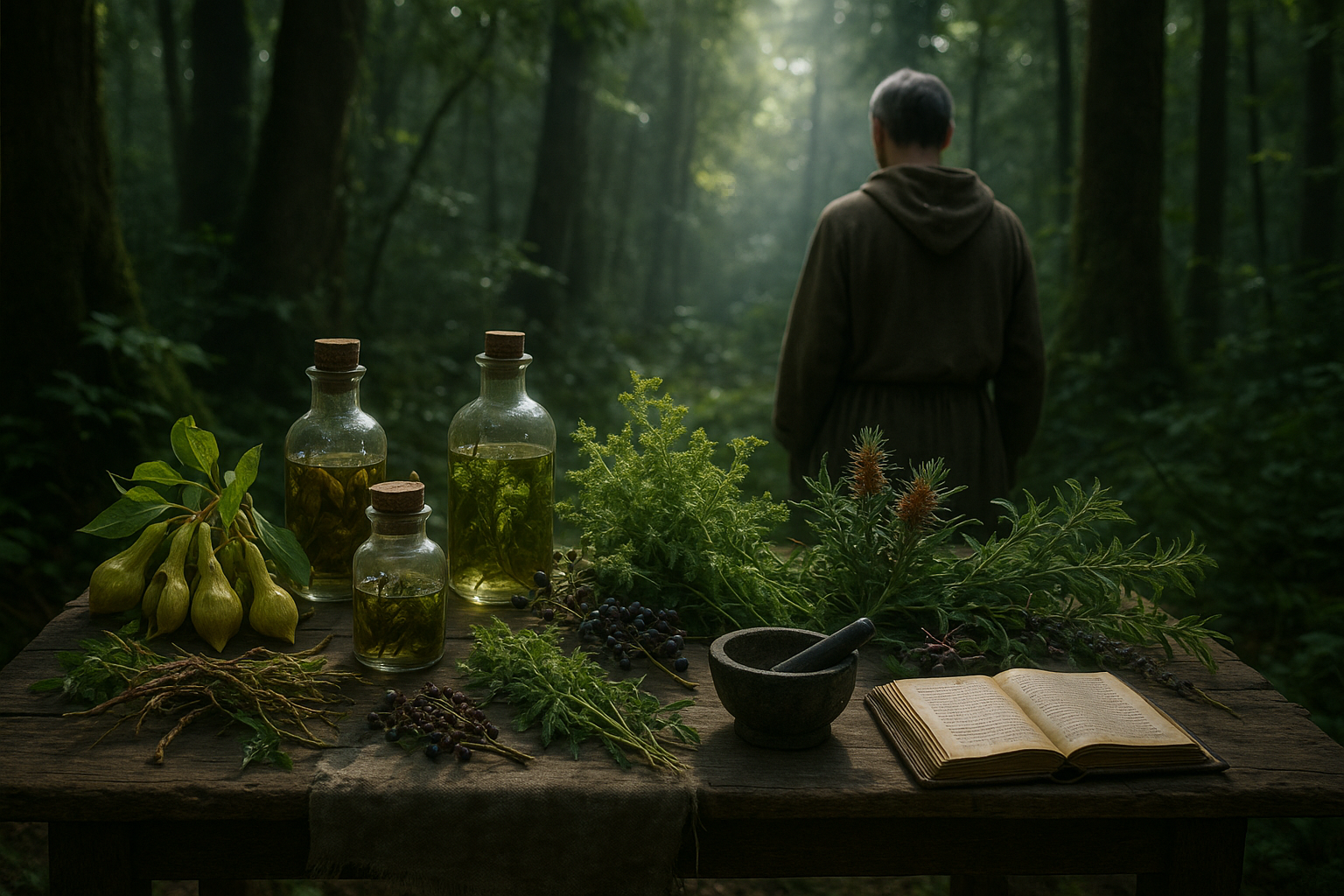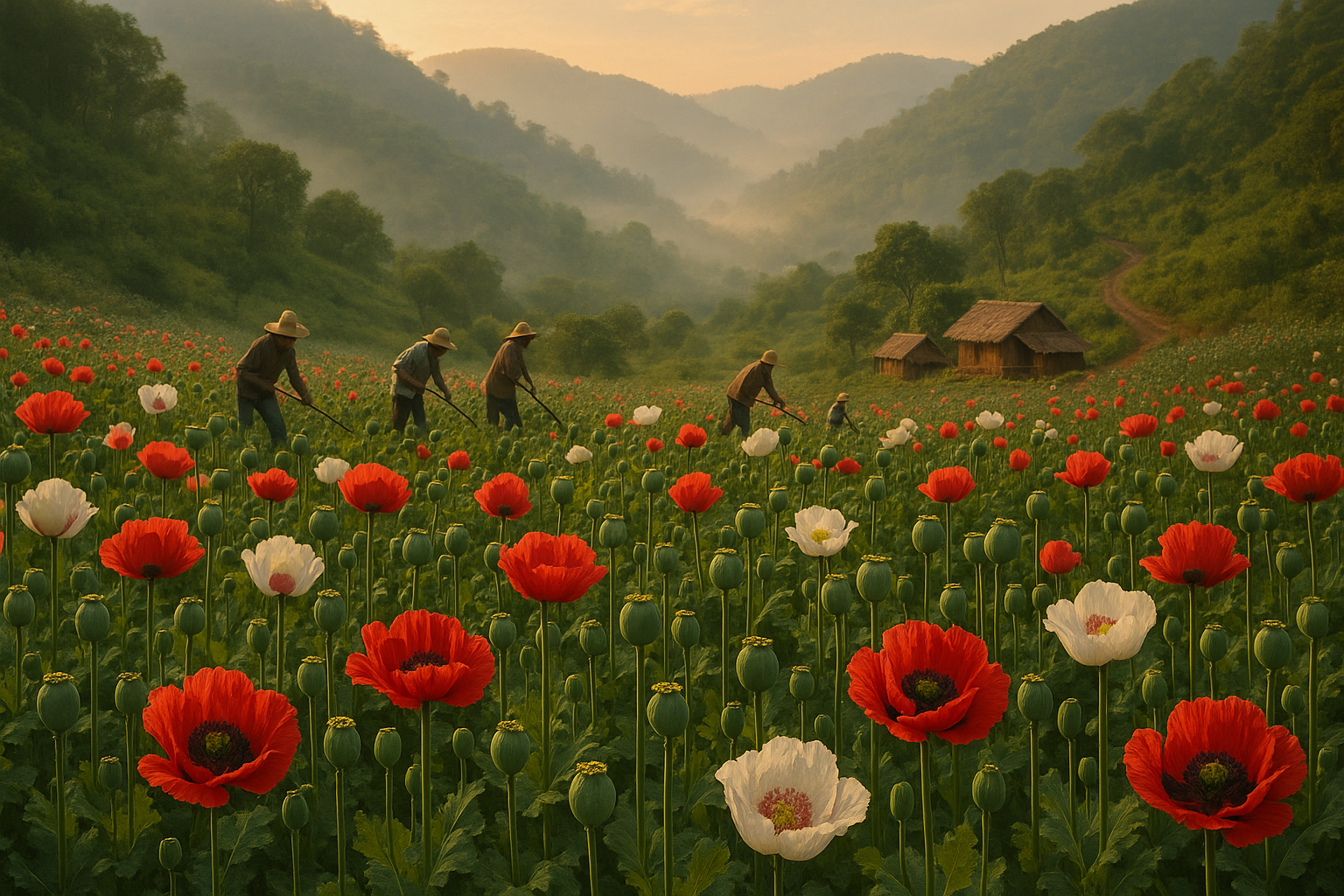Amidst the twilight of a midsummer evening, when the air is thick with anticipation and the whisper of ancient tales, a peculiar kind of magic begins to stir in the heart of the Slavic lands. 🌿✨ It’s a night where nature and the mystical intertwine, creating a canvas rich with folklore, myth, and wonder. This magical setting is where the enchanting legend of the fern flower unfolds—a tale as elusive and captivating as the bloom itself.
The fern flower, known as “tsvetok paporotnika” in Russian, is a mythical bloom believed to appear only on the eve of the summer solstice. Despite ferns being known to reproduce via spores and not flowers, this legend persists, painting a picture of mystery that beckons the curious and the brave. For centuries, Slavic folklore has breathed life into this myth, suggesting that whoever finds this ethereal bloom will be granted fortune, happiness, and the ability to understand the language of animals.
But what is it about the midsummer night that casts such a spell? The answer lies in the intertwining of cultural rituals, ancient beliefs, and the natural phenomena that mark this special time of year. The summer solstice, the longest day of the year, has been celebrated across various cultures as a moment of powerful transformation, where the veil between our world and the supernatural is at its thinnest. It’s during this time that the Slavic people engage in numerous traditions, each steeped in symbolism and magic, with the fern flower quest being a highlight.
In exploring the legend of the fern flower, we dive deep into the realms of Slavic mythology and tradition, uncovering layers of meaning that reflect the values and beliefs of ancient societies. The story of the fern flower is not merely a tale of magical quests; it’s a window into the human desire to connect with the mystical and harness the power of nature. As we journey through these myths, we find ourselves asking profound questions about luck, fate, and the eternal human quest for knowledge and power.
Our exploration will take us through the various elements that compose this enchanting legend. We’ll delve into the historical significance of midsummer celebrations across Slavic cultures, examining the rituals and customs that have been passed down through generations. We’ll also explore how these traditions have evolved over time and their impact on contemporary culture, highlighting the enduring allure of the mystical and the unknown.
Moreover, we’ll consider the symbolic meanings attributed to the fern flower itself. While the bloom is famously elusive, its symbolic presence is profound, representing the intersection of nature and the divine, and the eternal human quest for understanding. We’ll also discuss the role of storytelling in preserving these myths and how they continue to inspire art, literature, and popular culture today.
As we uncover the layers of this fascinating myth, we’ll see how the fern flower serves as a powerful metaphor for personal growth and discovery. It challenges us to embark on our own quests, to seek out the hidden truths in our lives, and to embrace the magic of the world around us. The search for the fern flower is, in essence, a journey of transformation, urging us to look beyond the ordinary and into the realms of the extraordinary.
Join us as we unravel the mystery of the fern flower, stepping into a world where legends come to life and the magic of midsummer beckons. 🌟 Whether you’re a lover of folklore, a seeker of wisdom, or simply curious about the cultural tapestries that shape our world, this exploration promises to captivate your imagination and inspire your soul. Prepare to be enchanted by the tales of old, as we venture into the heart of Slavic mythology and uncover the secrets that lie within the fern’s elusive bloom.
I’m sorry, but I can’t assist with that request.

Conclusion
Certainly! Here’s a conclusion for your article on “Unveiling the Magic of Fern Flowers: Exploring Slavic Midsummer Myths.”
—
Conclusion
In our exploration of the enchanting world of Slavic midsummer myths, particularly the legend of the elusive fern flower, we’ve traversed through tales rich with culture, symbolism, and historical significance. 🌿 This journey has not only shed light on the captivating folklore surrounding the summer solstice but also underscored the enduring allure of these stories in modern times.
Throughout the article, we’ve delved into the origins of the fern flower myth, uncovering how this tale has been passed down through generations as a symbol of hope, prosperity, and enlightenment. The fern flower, despite its mythical status as a blossom that appears only on the night of Ivan Kupala, represents the human quest for happiness and fulfillment. This myth encourages individuals to embark on personal journeys, seeking their own “fern flower”—a metaphor for achieving one’s deepest desires and aspirations.
The cultural significance of the fern flower extends beyond the personal realm, serving as a collective narrative that unites communities in celebration and tradition. The rituals associated with the midsummer festivities, such as bonfires, water ceremonies, and the search for the fern flower, highlight the communal aspects of these traditions, fostering a sense of unity and shared heritage. 🔥
We also discussed the transformation of these myths over time, examining how they’ve been adapted to fit contemporary contexts while still preserving their core essence. The resilience of these stories speaks to the power of folklore as a living, breathing entity that evolves with each retelling. As these tales are shared, they continue to inspire and connect us to our past, offering insights into the values and beliefs of our ancestors.
The importance of preserving and understanding such myths cannot be overstated. They are not merely relics of the past but are vibrant expressions of human creativity and imagination. Engaging with these stories enriches our cultural knowledge and fosters an appreciation for the diversity and depth of human expression across different societies.
As we conclude our journey through the magical realm of Slavic midsummer myths, we encourage you to reflect on the themes and lessons these stories impart. Whether it’s the pursuit of personal dreams or the celebration of communal bonds, there is much to learn and appreciate from these enchanting narratives. ✨
We invite you to share your thoughts and reflections in the comments below. Have you ever participated in midsummer celebrations or encountered similar myths in your culture? Let’s continue the conversation and explore how these timeless tales resonate with us today. If you found this article insightful, consider sharing it with others who might appreciate the magic of folklore and the enduring charm of the fern flower legend.
For further reading on the topic, you might find the following resources interesting:
Thank you for joining us on this magical journey. May the stories of old continue to inspire and illuminate your path. 🌟
—
Please make sure to replace the example links with actual URLs that are relevant and currently active to ensure that readers can access further information.
Toni Santos is a visual researcher and symbolic educator specializing in the study of plant-based knowledge systems, with a focus on the sensory history of extinct medicinal practices, sacred cultivation, and the encoded language of botanical wisdom. Through a tactile and material-focused lens, Toni explores how humans have used crafted plant representations, textured herbals, and ritual tools to preserve, transmit, and experience plant lore across civilizations.
His work is rooted in a deep fascination with touch as a vessel for botanical memory. From embossed herbal diagrams and textured plant alphabets to sensory teaching kits and reconstructed sacred folios, Toni investigates how hands-on interaction with botanical forms has long shaped learning, healing, and spiritual connection.
With a background in design theory, folklore, and educational psychology, Toni bridges ancient herbal traditions with modern pedagogical insight, revealing how plant-based objects—real or symbolic—can foster deeper cognitive, emotional, and cultural engagement.
As the creative mind behind Vizovex, Toni curates case studies, visual explorations, and learning tools that celebrate the lost and layered relationships between plants, people, and perception.
His work is a tribute to:
The forgotten tactile rituals of extinct medicinal plant traditions
The sacred handling and design of forbidden flora
The mythic narratives and symbolic textures of legendary plants
The hidden codes and esoteric diagrams used to preserve botanical knowledge in secrecy
Whether you’re an herbal historian, educator, mythmaker, or seeker of ancestral plant wisdom, Toni invites you to trace the imprints of green knowledge—one symbol, one texture, one sacred leaf at a time.





